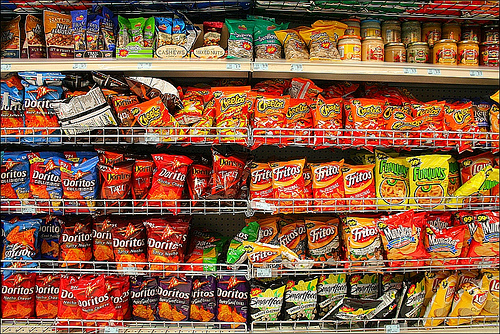When it comes to bad PR, only GMOs get a worse rap than food additives.
While most people-myself included-would like to avoid them, there are several things most of us don’t know about them.
For instance, many don’t know that food additives are go back to ancient times. In Ancient Greece and Rome, food inspectors were appointed because various bakers and food dealers were adding color and flavoring agents. And while most of us know that Columbus and other explorers were eager to reach Asia in order to get their hands on spices, many don’t realize that the primary use for spices back then were to preserve or mask the “off” taste and smell of rancid food.
Therefore, even if you are like me and also wish to avoid most food additives it’s nonetheless fascinating to know a little bit about the history of food additives and some of the things we are avoiding when we say, “No thank you!” to additives.
Below are five fascinating, little known facts about food additives.
(Note: Unless otherwise specified, the source of this information is the 1971 edition of The Health Seeker by J. I. Rodale and Staff.)
1. The first law to regulate food additives was issued in 1203 by King John of England. Specifically, it was designed to stop dishonest bakers from adding additives in bread to make it appear fresher and browner than it actually was. King Henry III (reign 1216 to 1272) later expanded upon this and issued a decree to protect the public from “[the] dishonest dealings of bakers, [winemakers], brewers, butchers and others.” It was later repealed in 1709.
2. In 1850, an English doctor, Arthur Hassall examined various popular coffee brands and found that out of the 34 brands available, only three were actually pure. Additives included roasted corn, beans, potato flour and ground acorns. Still, it was better than the things he found in samples of ground cayenne pepper.
All but four of the 28 samples he analyzed contained red lead and paint pigment.
3. German officials in the 14th and 15th century did not deal kindly with those who put illegal additives in food. There is a documented case of a wine dealer who was forced to drink six quarts of his own impure product. (He died from the impurities afterwards.)
4. Besides being geniuses in their respective fields of science and music, both Galileo and Ludwig van Beethoven suffered from lead poisoning. (In fact, the former died from it.) While the cause of Beehoven’s remains a mystery, the former’s is widely thought to be a result of his love of wine. Lead was a popular additive because supposedly, it made wine taste sweeter.
5. Shellac, that same stuff we may remember from woodshop class to protect and give finished pieces a shiny surface, is also a popular additive in candy. Vegans and even non-vegans will want to avoid this one since the source of it is the ground up shells of the female Lac beetle.
Therefore, the next time we go shopping, we may want to check the labels especially when it comes to prepackaged, processed foods. Even “100% natural” may not tell the full story. (After all, as the above example shows, shellac is completely natural as is lead although, thankfully, that is no longer permitted as an additive.)
While many additives are in fact fine for human consumption, sometimes it really is better to skip them if only because the mere knowledge of what we are eating can cause us to lose our appetites.
Love elephant and want to go steady?
Sign up for our (curated) daily and weekly newsletters!
Editor: Renée Picard
Photo: loop_oh/Flickr







Read 0 comments and reply